Black succulents or the dark succulents are impressive simply because of their color. They are in contrast to the other plants, which you could usually spot in common green.
You could consider using them to decorate for Halloween. Alternatively, you may also add them to your house garden which will bring a unique look to the whole set up.
When we say black succulents, they can be different shades of black for example; burgundy, dark maroon, and dark purple.
However, you need to create contrast predominately white spaces so that you could help these dark succulents to look amazing.
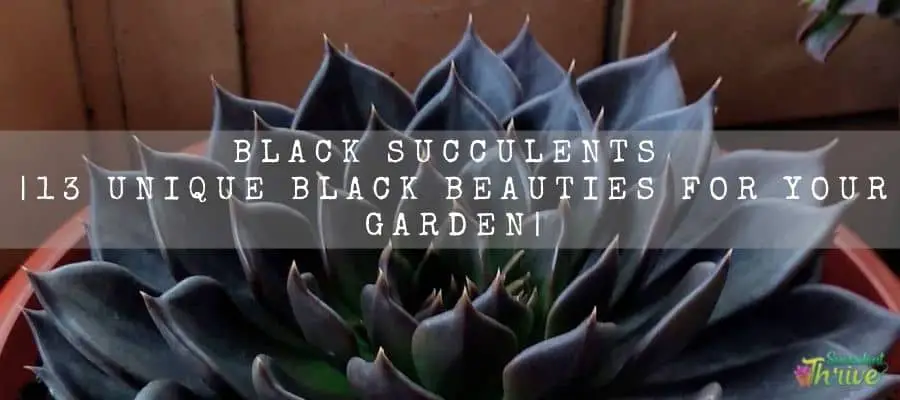
Black Rose Tree Houseleek (Aeonium arboreum ‘Zwartkop’)
This is an evergreen succulent which usually forms large rosettes. Their leaves are dark burgundy-colored pointed leaves.
When they are exposed to full sunlight, they will turn black in color. You could expect them to flower during spring with bright golden colored flowers.
They would resemble star shapes. They would rise to 3-4 feet in height generally. Their preferred USDA zones would be 9-11. They will survive well in full sunlight to partial sunlight.
They would also require a well-draining soil mix to thrive well. Black rose tree houseleek plant rosette has a dark purple shade along with a waxy texture which makes them a shiny black succulent.
This is one of the best black succulents to grow. These are endemic plants to Canary Islands.
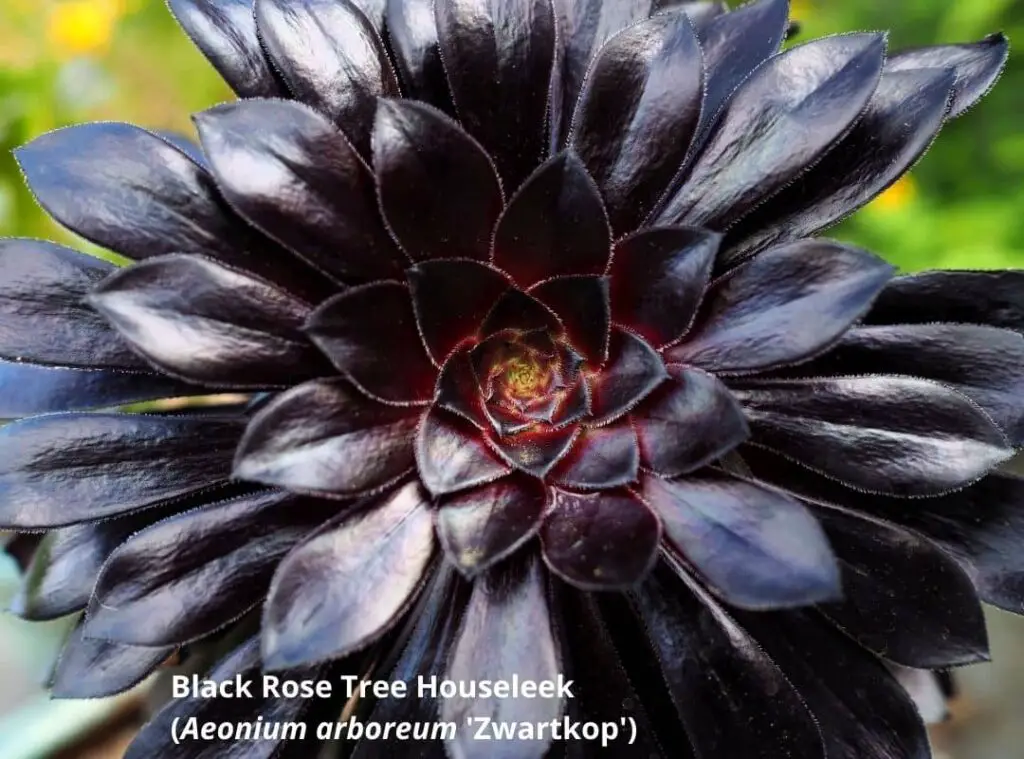
Echeveria affinis ‘Black Knight’
Black Knight Hens and Chicks (Echeveria affinis ‘Black Knight’) is another attractive black succulent.
When they form new leaves, it intensifies the beauty of this plant. black knight plants with fat dark, purple-colored leaves make them look surprisingly attractive. Also they have long and slender leaves.
Their prefeed USDA zones are 9-11. Also they would withstand full sunlight. Please provide them a well-draining soil mix to thrive well.
They will usually rise to 6 inches. You could expect them to flower during late fall with coral red blooms. Echeveria affinis ‘Black Knight are native plants in central America.
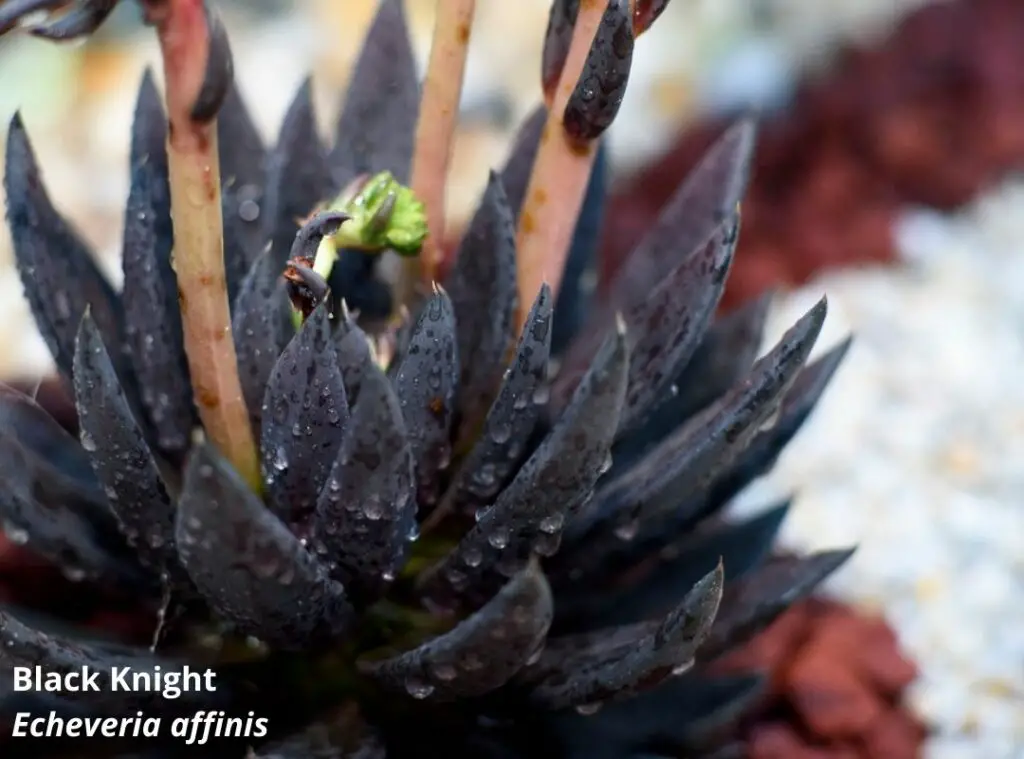
Echeveria ‘Black Prince’
Echeveria black prince is a purple-colored plant, but it is so deeply colored. Hence you could consider that as a black succulent.
They would consist of dark colored wide pointed leaves. Those leaves will form in a rosette manner.
These plants would also require bright indirect sunlight and warm temperatures along with a well-draining soil mix.
Black prince prefers to grow in USDA 9-12 zones. They would usually rise to 4 inches in size. Black prince plants are native plants in Mexico.
During fall and winter, they would produce blooms in bright scarlet red color. They would be useful in adding to rock gardens, containers etc.
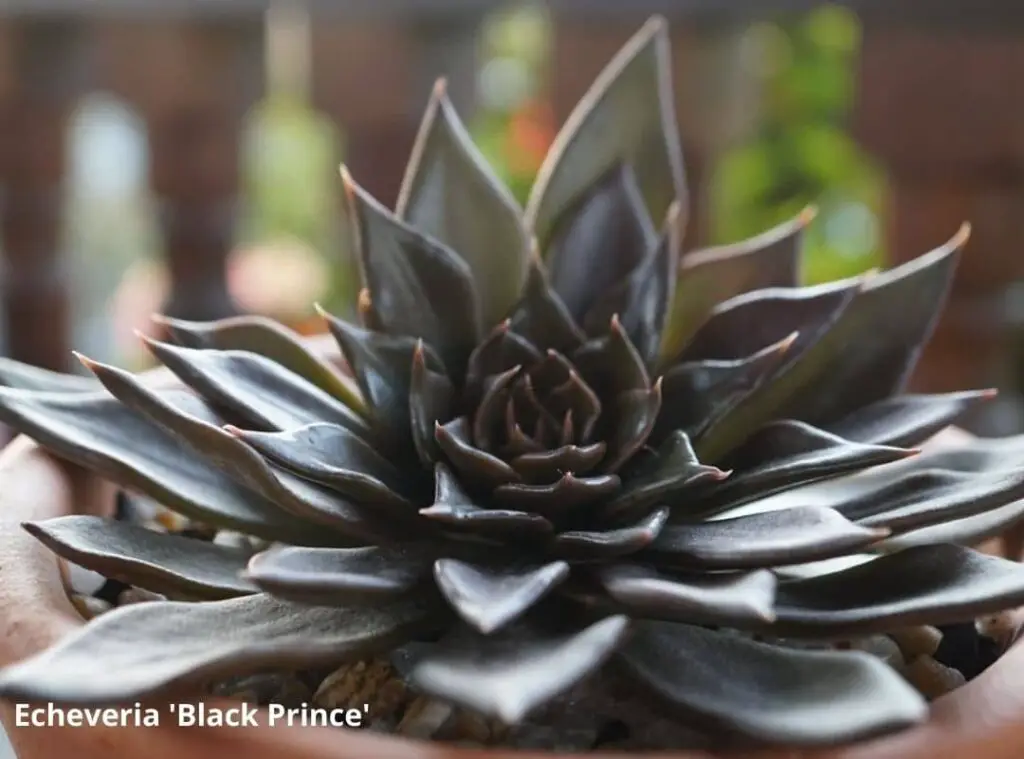
Black Zebra Cactus “Haworthia” (Haworthiopsis limifolia)
Black zebra cactus are native plants in southern Africa. Black zebra plant leaves tend to take a triangular shape.
Further they could be chunky and consist of solid ridges outside the leaves and that is a striking feature of these plants.
They would usually flower during summer. Those blooms would form on long stem edges. Black zebra plants can produce offsets.
Black zebra plants’ preferred USDA zones are 9-11. They would perform well in full sunlight to partial sunlight.
Further you need to provide them with a well-draining soil mix as well. Their average height would be 6-12 inches.
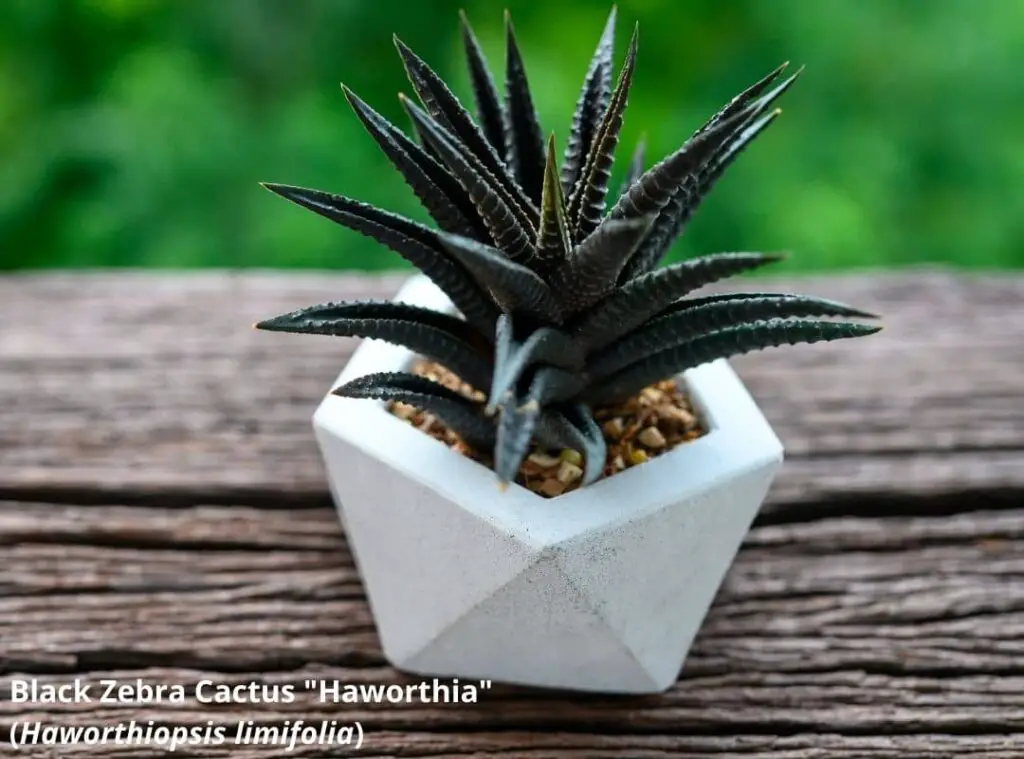
Chinese jade (Sinocrassula yunnanensis)
Chinese jade (Sinocrassula yunnanensis) is a simple and small succulent. They have chubby leaves which form in a pointed upward manner.
They usually spread through offsets whilst making spiky rosettes as well. you could spot this plant in both green and in black colors.
Their leaves consist of hair as well. They could perform well in a well-draining soil mix. They require bright sunlight which will help them to flourish.
These are native plants in China. They would usually bloom during fall or summer with small white colored flowers.
Chinese jade is monocarpic. They could rise to about 4 inches in height. Also they ares an evergreen plant.
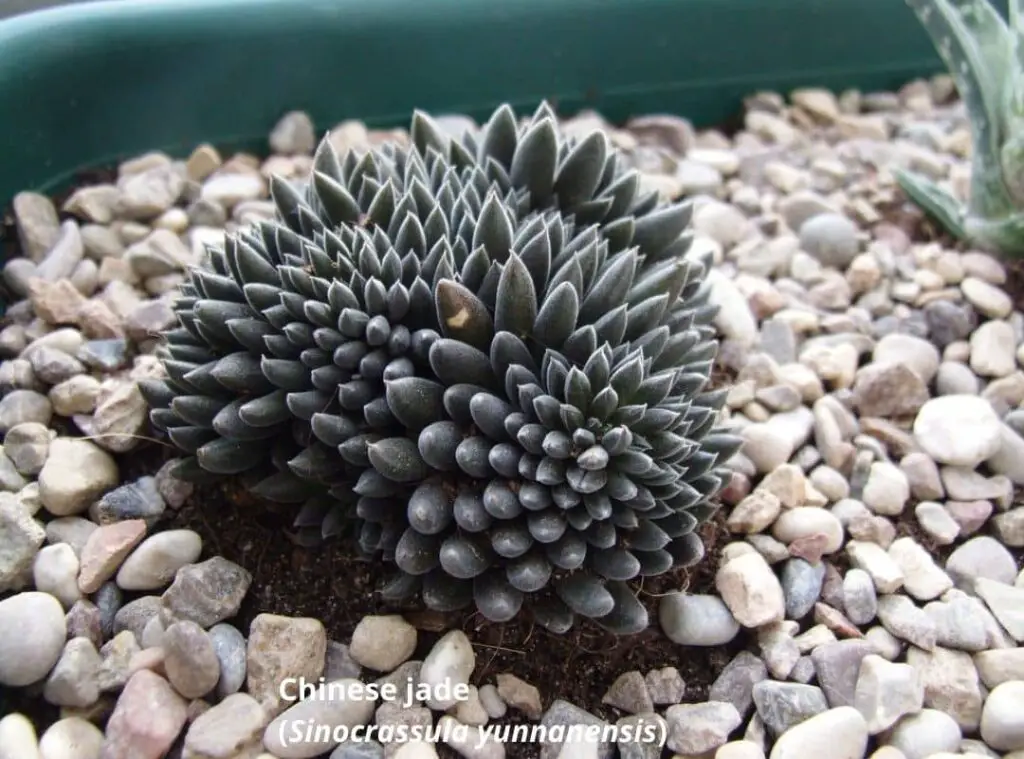
Haworthia sordida
These plants are originating from South Africa and those are native plants there. Haworthia sordida are very dark green colored plants.
They would produce rosettes which you could spot, usually in solitary. They grow as stemless plants. Their young leaves comprise tubercles and tend to grow in an outward manner.
When those leaves grow mature, they tend to form erecting without the tubercles.
Their blooming would take place in late winter or in early summer. Further, their flowers would be white in color and tend to form long slender stalks.
They would require a well-draining soil mix to thrive well and further prefer to have full sunlight and partial shade.
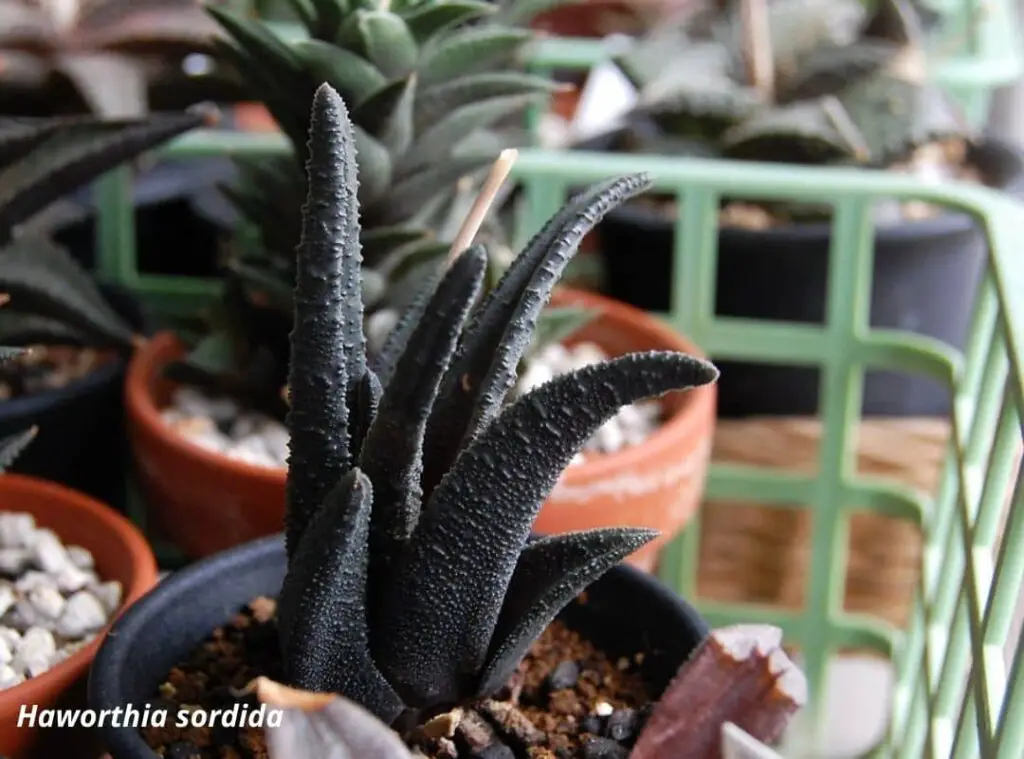
Haworthiopsis nigra var. Diversifolia
Haworthiopsis nigra var. Diversifolia are endemic plants in South Africa.
They produce rosettes which could be about 6 cm in diameter and 10 cm in height. Their leaves would be triangular shaped and solid black or dark gray in color.
Their leaves would be stiff. Further you could spot them partially folded. Moreover, they will consist of a pointed tip as well. Outer and inner sides of the leaves will have tubercles.
You could expect them to flower in late spring or in summer with tiny white flowers. They would prefer to grow in USDA hardiness zones 10a-11b.
You need to provide them a well-draining soil mix and light shade to thrive well.
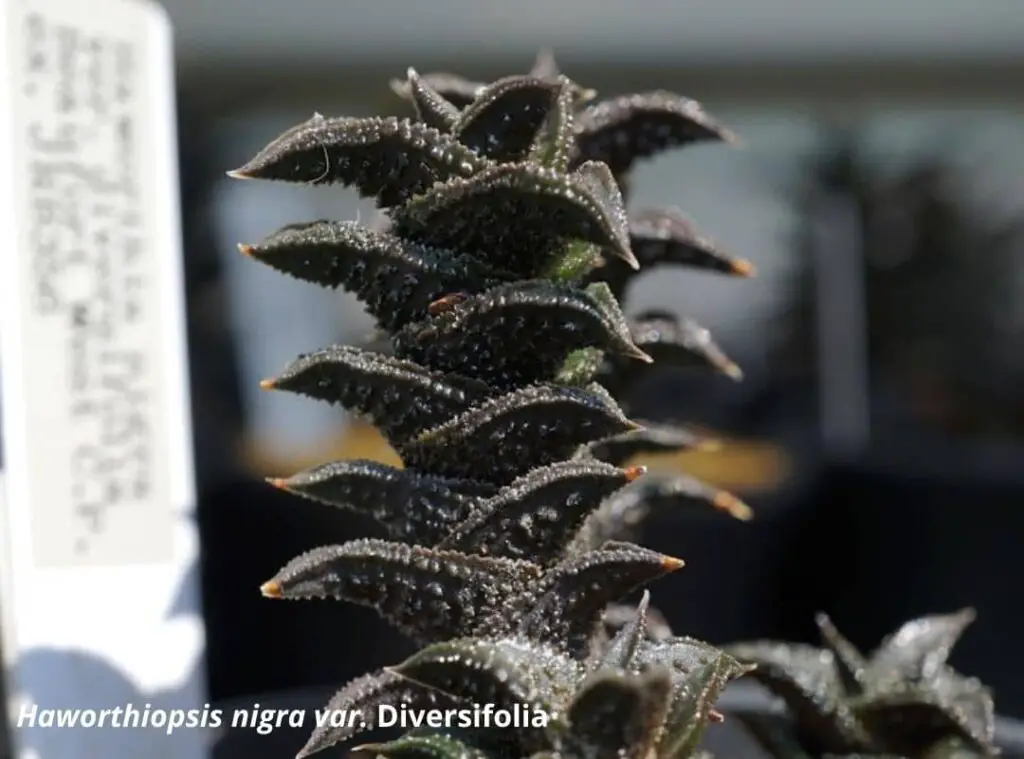
Haworthia marxii
Haworthia marxii’s foliage is dark purple in color. That is what makes this plant look like a black succulent. H.Marxii is a rare succulent.
These plants consist of flat and slender leaves when compared with the average retudois species. Due to this, their rosettes would tend to take a flat disc shape when you look at them sideways.
These are native plants in Southern Africa.
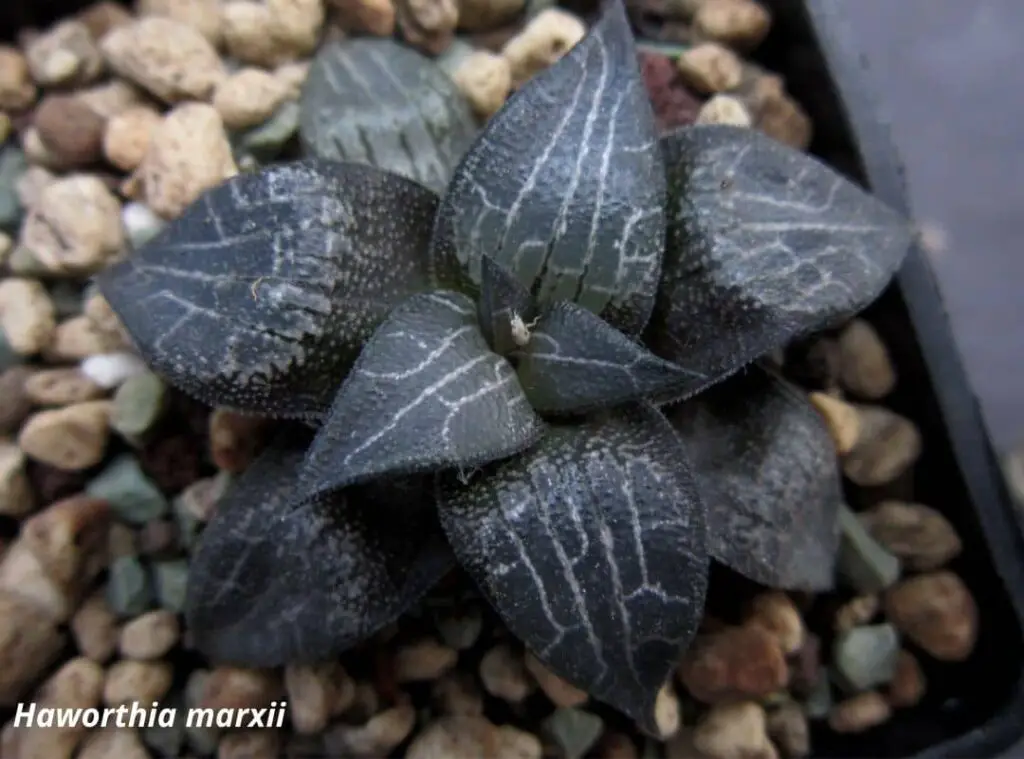
Dyckia Black Saber Tooth
Dyckia black saber tooth plants are growing at a moderate rate. They would thrive well in full sunlight.
Moreover, they would require a well-draining soil mix to grow well too. They are an evergreen set of plants, and you could expect them to flower in the spring season.
Those flowers would be yellow in color. You could grow them in containers and in rock gardens as well. Their foliage color would be dark blue.
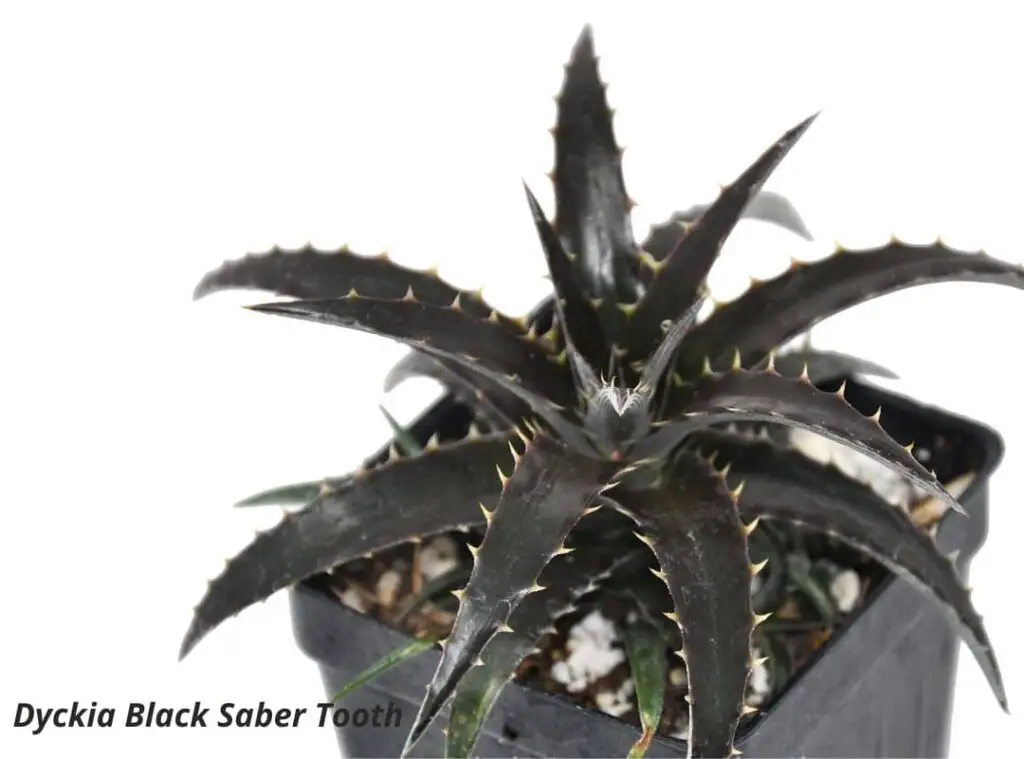
Blue Barrel Cactus (Ferocactus glaucescens)
Blue barrel cactus is a deep blue succulent. However, many people consider this as a black succulent. Their preferred USDA zones would be 9-11.
Blue barrel cactus would require full sunlight to perform well. Usually, they will rise to 1-2 feet in height. They need a well-draining soil mix to grow well too.
This would tend to take a globose to cylindrical shape. They produce funnel- shaped flowers in bright lemon color during late spring to summer.
If you wish to add texture to your garden, they will perfectly fit your requirement. You could use them for rock gardens and for desert gardens as well. These are native plants in Mexico.
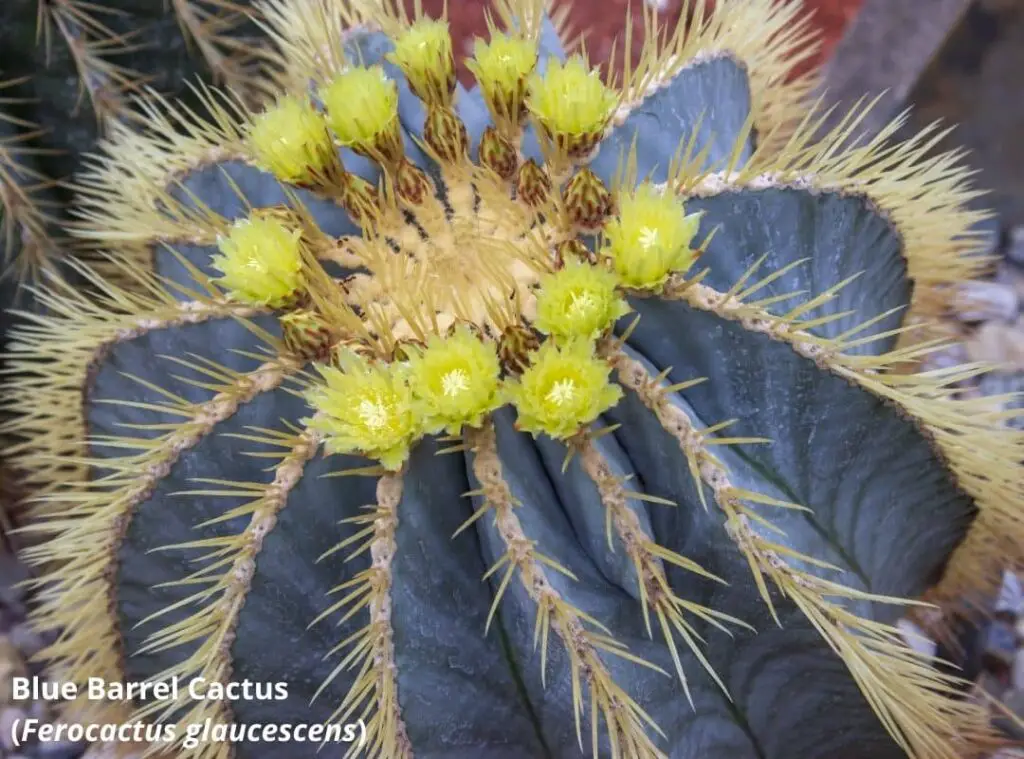
Chocolate Drop Stonecrop (Sedum ‘Chocolate Drop’)
Chocolate drop stonecrop plants are endemic plants in western northern America.
This has an attractive foliage color which you could spot in burgundy, and which later turn black sometimes.
Their preferred USDA zones would be 4-8. Their average height would be about 1 foot.
They would thrive well in full sunlight and in a well-draining soil mix. They would usually bloom with rose colored flowers during summer and they would form in terminal cymes.
Those blooms would tend to take a star shape. They would continue to keep their attractive foliage during winter also. You could use them for beds and for boarders as well.
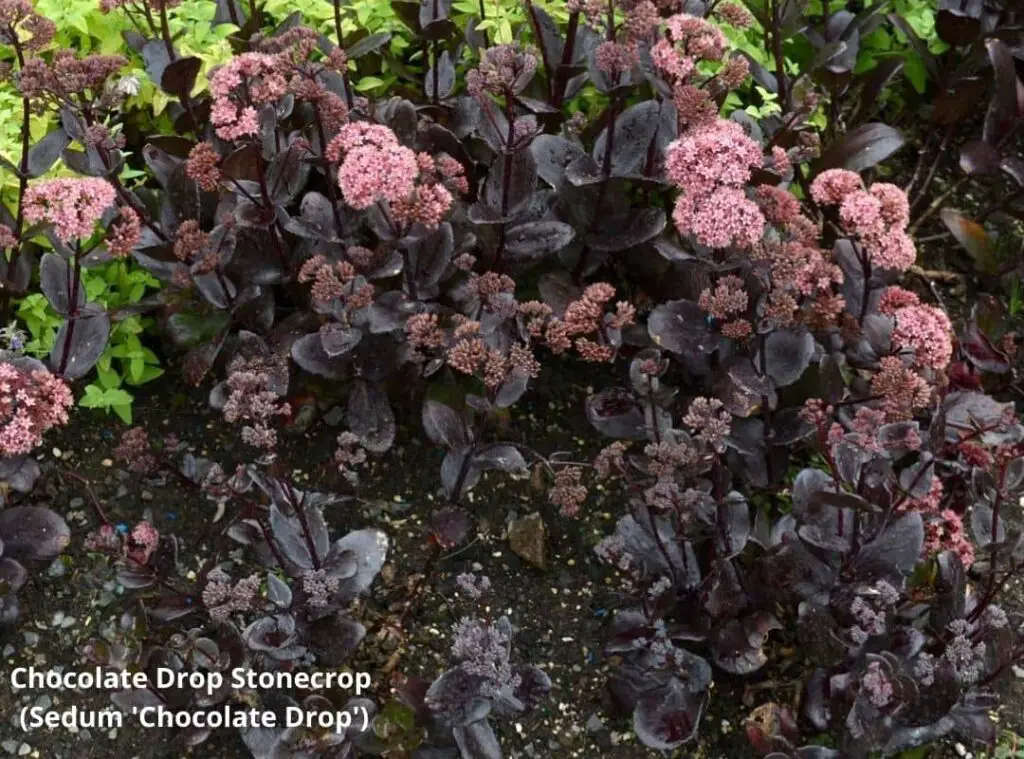
Purple Wood Spurge (Euphorbia amygdaloides ‘Purpurea’)
Purple wood spurge plants are an evergreen perennial plants. They usually have green – black colored leaves.
They would further consist of red colored stems. They will suit any rock garden. Apart from that they would prefer to grow in USDA zones 4-9.
Purple Wood Spurge would perform well in full sunlight to partial sunlight. These are native plants in central America.
Further they would require a well-draining soil mix to grow well too. Their height would be approximately about 12 – 18 inches.
Usually, they bloom with yellow overtones during mid spring to early summer. You could grow them in gardens or even in containers / pots.
During spring, their leaves would be narrow and burgundy in color. Further they could turn dark green with red undersides as well. During fall, their foliage color would turn burgundy in color.
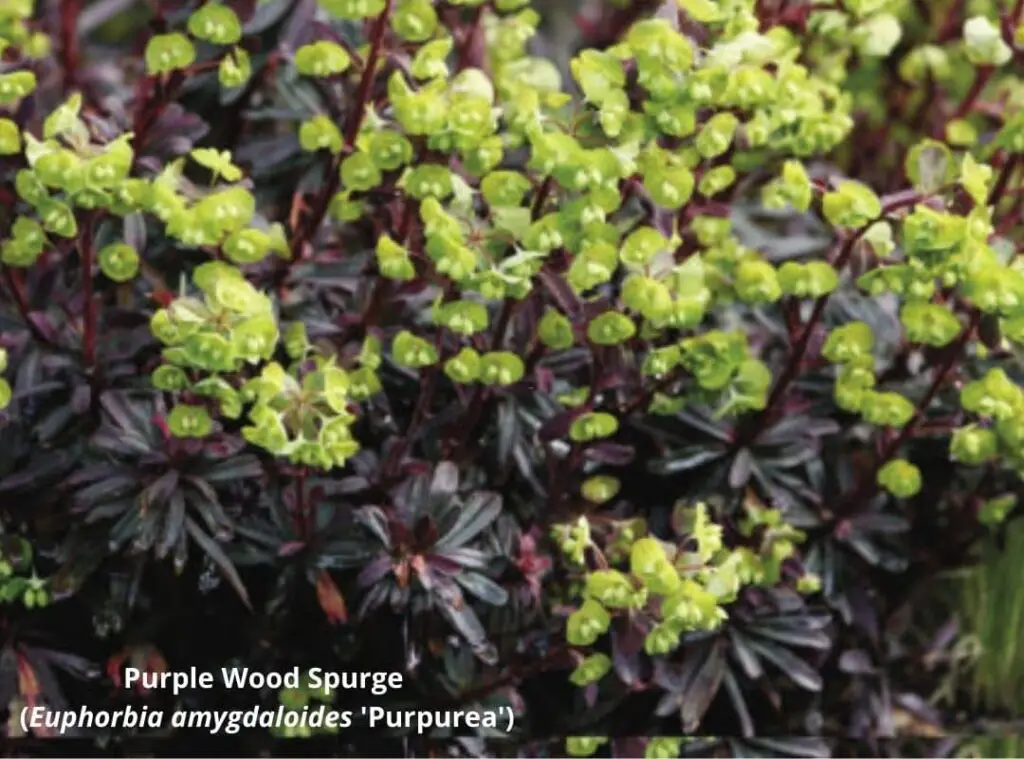
Black Hens and Chicks (Sempervivum tectorum)
Black hens and chicks’ plant is also another deep purple colored plant. However, it would look grim as black colored plants.
You could spot their rosette centers in bright green colors along with leaves in burgundy color.
They are a hardy set of plants when compared with the rest of other black succulents. These are monocarpic plants which literally means they would die once they flower.
During winter, their leaves’ green color could turn into dark shades of purple and brown hue. They would prefer to grow in USDA 3-8 zones.
Black hens and chicks require full sunlight to thrive well. Make sure you grow them in a well-draining soil mix. Usually, they will rise to 6-12 inches.
They are native plants in southern Europe and in western Asia.
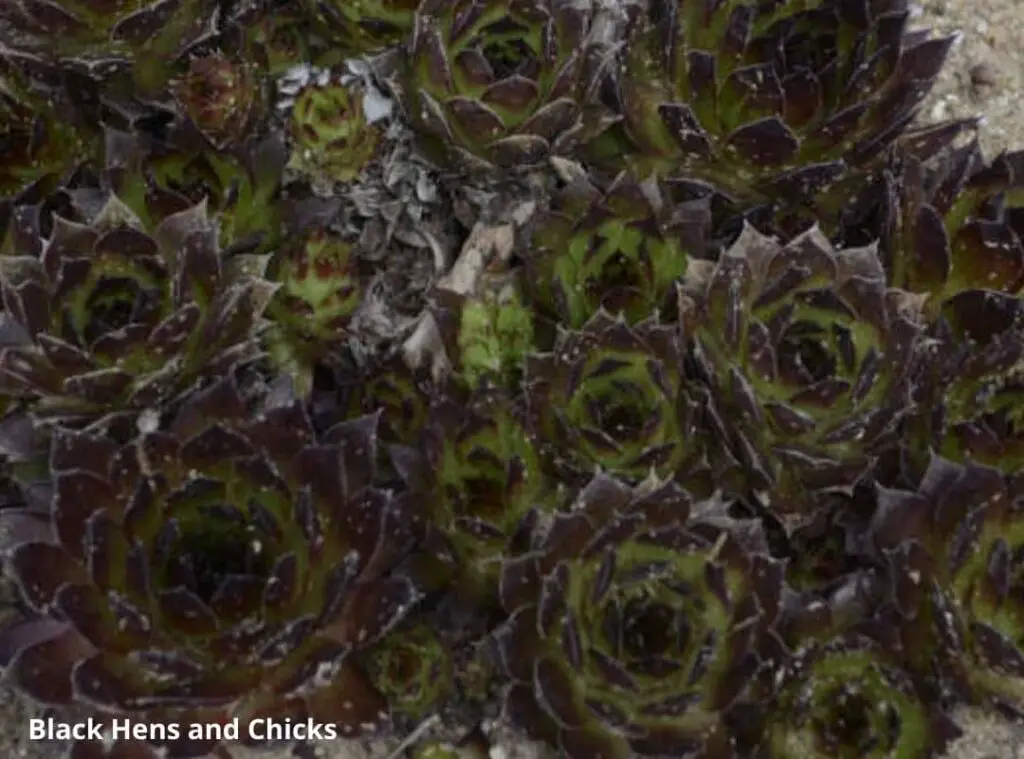
Conclusion
I hope this article was useful for you to enhance your knowledge on the black succulents
Hope you may understand that growing black succulents is easy and they look unique in their colors when compared with others.
Read Next: Succulent heart (Hoya Kerrii) Full Care Guide | 17 Gardening Tips|
